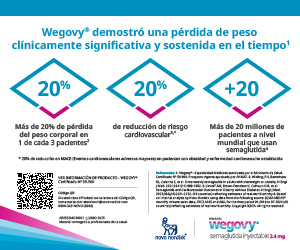The veil that the COVID-19 pandemic lifted in the pediatric population with type 1 diabetes mellitus
DOI:
https://doi.org/10.47196/diab.v58i1.746Keywords:
pandemic, COVID-19, type 1 diabetes mellitus, pediatricsAbstract
The SARS-CoV-2 pandemic constituted a public health emergency of international concern without precedent in the 21st century. It caused a historic crisis with an impact on well-being and development in all societies in the world, generating profound changes in the political, social, economic and health orders. Like any crisis, it demonstrated the strengths and weaknesses to which societies are exposed. The extraordinary development of molecular biology, with unprecedented achievements, made it possible for scientists, a month after the first case, to sequence the genome of the virus and publish it online to give it the possibility of being used by different laboratories in the world with research and diagnosis purposes, while the race against time began to achieve the formula for the vaccines that arrived in less than a year. Additionally, the Internet became a fundamental ally to provide answers in health, education and social contacts.
References
I. Organización Panamericana de la Salud. La COVID-19 afectó el funcionamiento de los servicios de salud para las enfermedades no transmisibles en las Américas. Disponible en: https://www.paho.org/es/ noticias/17-6-2020-covid-19-afecto-funcionamiento-serviciossalud-para-enfermedades-no.
II. Glaser N, Fritsch M, Priyambaba L, et al. ISPAD Clinical practice consensus guidlines 2022. Diabetic ketoacidosis and hyperglycemic hyperosmolar state. Pediatr Diab 2022;23(7):835-656.
III. Cherubini V, Grimsmann JM, Akesson K, et al. Temporal trends in diabetic ketoacidosis at diagnosis of paediatric type 1 diabetes between 2006 and 2016. Results from 13 countries in three continents. Diabetologia 2020;63(8):1530-1541.
IV. Jensen ET, Stafford JM, Saydah S, et al. Increase in prevalence of diabetic ketoacidosis at diagnosis among youth with type 1 diabetes. The SEARCH for Diabetes in Youth Study. Diabetes Care 2021Jul;44(7):1573-1578.
V. Usher -Smith JA, Thompson MJ, Sharp S J, Walter FM . Factors associated with the presence of diabetic ketoacidosis at diagnsis of diabetes in children and young adults. A systematic review. BMJ 2011;343:d 4092.
VI. Rugg-Gunn CEM, Dixon E, Jorgensen AL, et al. Factors associated with ketoacidosis at onset of type 1 diabetes among pediatric patients. JAMA Pediatr 2022 Dec1;176(12):1248-1259.
VII. Ghetti S, Kuppermann N, Rewers A at al. Cognitive function following diabetic ketoacidosis in young children with type 1 diabetes. Endocrinol Diabetes Metab 2023;6(3)e 412.
VIII. González-Pannai P, Balboa R, Navarro R, Nocita MF, Ferraro M, Mannucci C, Prevalence of edema cerebral among diabetic ketoacidosis patients. Arch Argent Pediatr 2020;118(5):332-336.
IX. Hirschler V, Molinari C, Krochik G, Prieto M, Martínez Mateu C, et al. Debuts de diabetes mellitus tipo 1 en niños antes, durante y después de la pandemia de COVID-19. Estudio multicéntrico. Rev Soc Arg Diab 2023;58(1):11-19.
X. Rahmati M, Keshvari M, Mirmasuri S, et al. The global impact f COVID-19 pandemic on the incidence of pediatric new-onset type1 diabetes and ketoacidosis. A systematic review and meta-analysis. J Med Virol 2022;94(11):5112-5127.
XI. Souza D, Empringham J, Pechilvanoglou P, et al. Incidence of diabetes in children and adolescencets during the COVID-19 pandemic. A systematic review and meta-analysis. JAMA Netw Open 2023;6(6):e2321281.
Downloads
Published
Issue
Section
License
Copyright (c) 2024 on behalf of the authors. Reproduction rights: Argentine Diabetes Society

This work is licensed under a Creative Commons Attribution-NonCommercial-NoDerivatives 4.0 International License.
Dirección Nacional de Derecho de Autor, Exp. N° 5.333.129. Instituto Nacional de la Propiedad Industrial, Marca «Revista de la Sociedad Argentina de Diabetes - Asociación Civil» N° de concesión 2.605.405 y N° de disposición 1.404/13.
La Revista de la SAD está licenciada bajo Licencia Creative Commons Atribución – No Comercial – Sin Obra Derivada 4.0 Internacional.
Por otra parte, la Revista SAD permite que los autores mantengan los derechos de autor sin restricciones.




























